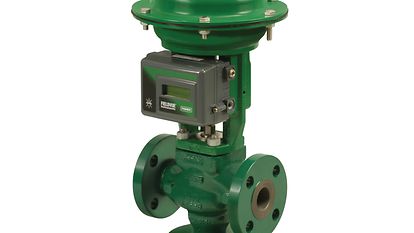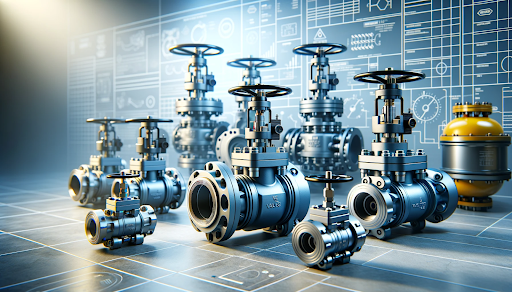Recognizing the Value of Control Valves in Process Automation
Recognizing the Value of Control Valves in Process Automation
Blog Article

Maximize Power Financial Savings and Convenience With Advanced Building Automation Controls
In the realm of modern style and center administration, the integration of advanced structure automation manages stands as a critical development. The convergence of modern technology and sustainability has actually birthed a new era where power effectiveness, comfort optimization, and functional streamlining are no more distant aspirations yet obtainable truths. By harnessing the power of automation, structures can adjust, respond, and advance in manner ins which were when unthinkable. The possibility for considerable energy cost savings and boosted comfort is not just an opportunity but an assurance waiting to be met. This paradigm shift in structure management holds the vital to unlocking a globe where ecological conscientiousness and resident well-being sympathetically coexist within the walls of our frameworks.
Power Effectiveness Perks
Power effectiveness benefits can considerably decrease energy usage and functional prices in structures. Energy-efficient systems, such as advanced structure automation controls, can optimize the use of resources like cooling, lighting, and heating, leading to reduced energy costs over time.
Additionally, improved power effectiveness can lengthen the life-span of structure equipment and systems. By operating more efficiently, HVAC systems, light, and various other building elements experience much less deterioration, leading to reduced maintenance and replacement costs. In addition, energy-efficient structures commonly command greater residential or commercial property values and rental rates, providing long-lasting financial advantages to owners.
In addition, energy performance can boost resident convenience and performance. Appropriately managed indoor atmospheres with optimum lights and thermal problems develop an even more pleasurable and conducive work space, resulting in improved worker satisfaction and efficiency. On the whole, the power effectiveness benefits associated with advanced structure automation controls are diverse, encompassing expense savings, environmental stewardship, and occupant wellness.
Improved Convenience Control
Enhancing comfort control in building environments needs an advanced integration of sophisticated automation systems for optimum owner wellness. By making use of sophisticated structure automation controls, facilities can tailor the indoor atmosphere to meet the specific requirements and choices of passengers. These systems allow specific policy of lights, air flow, and temperature level, developing a effective and comfortable atmosphere. Resident complete satisfaction and productivity are carefully linked to thermal convenience, making it necessary to have systems in position that can adapt to changing problems in real-time.
By incorporating these innovative controls, buildings can not just improve convenience yet likewise improve energy efficiency by enhancing system operations based on real occupancy and use patterns. Eventually, prioritizing occupant convenience through advanced automation systems leads to an extra delightful and much healthier interior setting.
Functional Performance Improvements

In addition, the execution of real-time surveillance and analytics tools enables building operators to identify power inefficiencies and operational anomalies promptly. By continually checking energy usage patterns and system performance metrics, changes can be made in real-time to enhance power intake and make sure peak operational efficiency. control valves. In addition, including need reaction techniques into structure automation controls can further enhance functional effectiveness by dynamically changing power use based on grid conditions and rates signals
Indoor Climate Optimization
Effective interior environment optimization is a basic facet of structure automation controls, making sure owners' convenience and wellness while optimizing energy savings. By utilizing advanced sensors and controls, developing automation systems can continually check and readjust temperature level, moisture levels, air high quality, and ventilation to produce an optimum indoor see post atmosphere. Maintaining constant and comfy problems not only improves passenger satisfaction yet also boosts productivity and total wellness.
Indoor climate optimization also plays an important duty in power performance. By fine-tuning home heating, cooling, and ventilation systems based upon real-time data and tenancy patterns, developing automation controls can significantly decrease energy intake - control valves. As an example, implementing methods such as demand-controlled ventilation and thermal zoning can aid minimize energy waste while making sure that each location of the building obtains the required conditioning.

Lasting Setting Development
Building automation regulates not only maximize interior climate conditions for power effectiveness and wikipedia reference owner convenience but additionally lay the foundation for producing a sustainable setting through tactical management of resources and systems. By incorporating innovative structure automation modern technologies, such as sensors, actuators, and intelligent software, centers can adjust and check power usage in real-time to decrease waste and reduce their carbon impact. These systems make it possible for anticipating upkeep, recognizing potential problems prior to they intensify and maximizing devices performance to boost durability and effectiveness.
Moreover, sustainable setting creation prolongs beyond energy management to encompass water conservation, waste reduction, and indoor air top quality improvement. Building automation controls can manage water usage, spot leaks, and make sure correct waste disposal methods, adding to overall sustainability initiatives. Additionally, by controlling and keeping track of air flow and purification systems, these modern technologies improve occupant health and productivity while decreasing power usage connected with a/c procedures.
Verdict
To conclude, progressed building automation manages deal significant advantages in terms of energy financial savings, convenience control, functional effectiveness, interior environment optimization, and producing a lasting setting. By implementing these controls, buildings can achieve optimum performance while lowering power intake and improving occupant convenience. It is evident that using sophisticated automation innovation is critical in boosting building efficiency and developing a much more sustainable future.
Energy performance advantages can considerably lower power intake and functional expenses in structures. On the whole, the energy efficiency benefits connected with advanced building automation controls are complex, encompassing price savings, environmental stewardship, and owner wellness.
Additionally, integrating need action methods into structure automation controls can additionally boost operational efficiency by dynamically adjusting power usage based on grid conditions and rates signals.
Structure automation regulates not just optimize interior climate conditions for energy efficiency and resident convenience however also lay the structure for producing a sustainable setting through tactical management of systems and resources.In conclusion, advanced structure automation manages deal significant benefits in terms of energy financial savings, convenience control, operational performance, interior environment optimization, and producing a sustainable setting.
Report this page